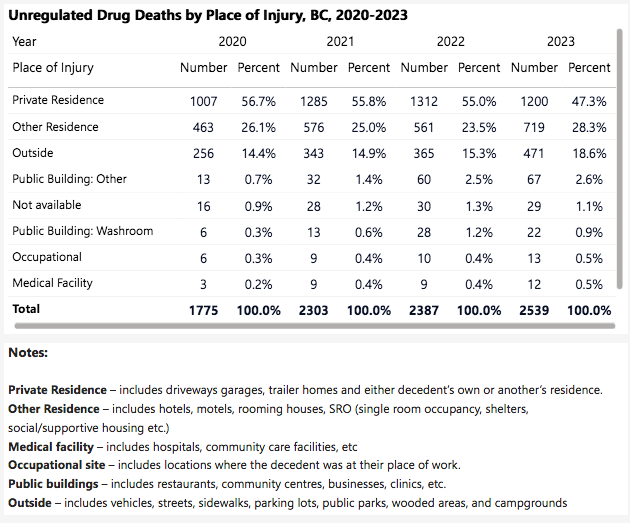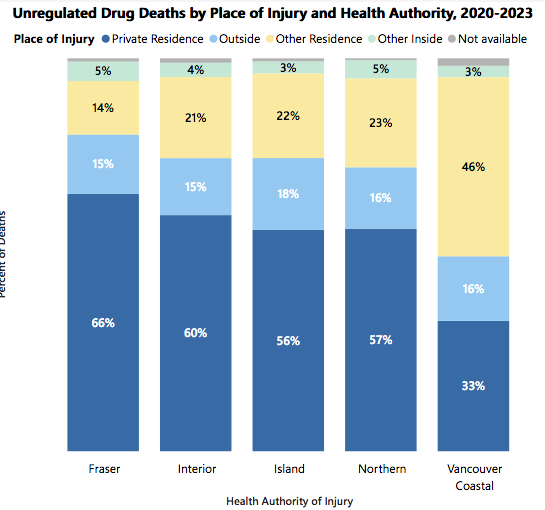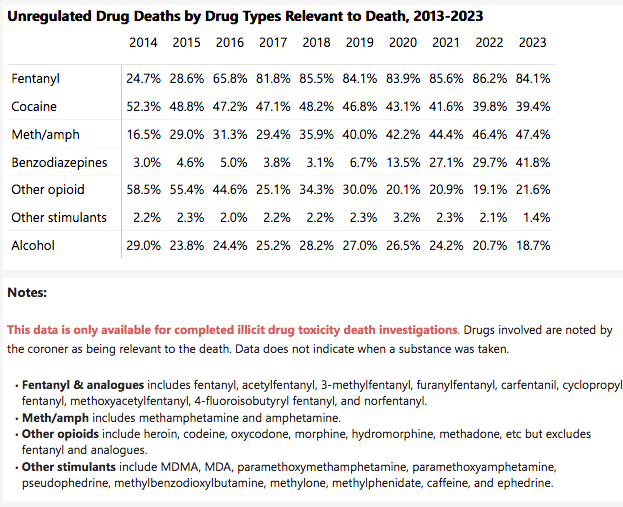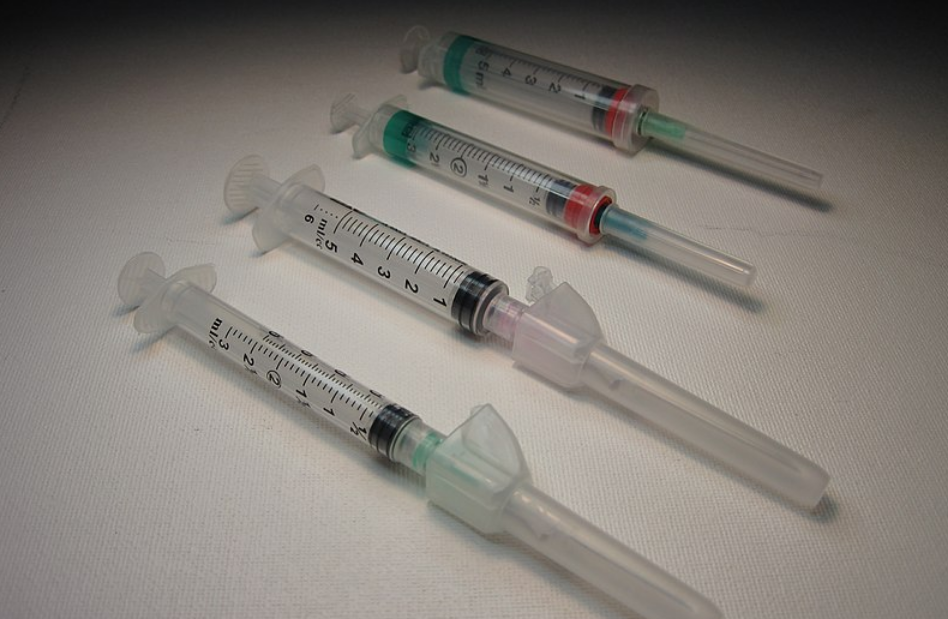Illicit drug toxicity death rate rises in city, across the province
The illicit drug toxicity death rate in Nelson continues to rise, jumping from a high of 11 in 2022 to 16 last year, according to figures recently released by the B.C. Coroner Service.
That translates into a data rate per 100,000 person-years in Nelson from 40 in 2022 to a 57 in 2023 — 19th out of 88 local health authorities in the province.
In Castlegar, unregulated drug deaths dropped in 2023 to four, after a high of seven in 2022, while Grand Forks recorded six deaths — its highest total. Trail rose rapidly from four unregulated drug deaths in 2022 to 11 in 2023.
Toxic, unregulated drugs claimed the lives of at least 2,511 people in British Columbia in 2023 — the B.C. Coroner’s Service stated, the largest number of drug-related deaths ever reported to the agency.
“Tragically, toxic, illicit drugs are continuing to cause unprecedented numbers of deaths across our province,” said Lisa Lapointe, chief coroner, in a statement. “This crisis, driven primarily by unregulated fentanyl, has cost our province dearly in the loss of much-loved and valued members of our communities. We cannot bring our deceased loved ones back, but we can and must do much more to protect the lives of tens of thousands of our family members, friends and colleagues still at risk.”
Illicit fentanyl continues to drive the toxic-drug crisis, as fentanyl and its analogues were by far the most regularly detected substances, appearing in more than 85 per cent of test results conducted in 2023. Hydromorphone was detected in about three per cent of tests.
Unregulated drug toxicity is the leading cause of death in British Columbia for persons aged 10 to 59, accounting for more deaths than homicides, suicides, accidents and natural disease combined. The lives of at least 13,794 British Columbians have been lost to unregulated drugs since the public-health emergency was first declared in April 2016.

Urban areas
The impacts of the illicit drug crisis are being felt by communities throughout B.C.
While the largest numbers of deaths continue to be recorded in urban centres such as Vancouver, Surrey and Victoria, the rates of unregulated drug deaths per 100,000 residents are at record levels in every health authority, including Northern (80.5), Island (49.9), Vancouver Coastal (46.1) and Interior (34.8).

2024 summary
- The number of unregulated drug deaths in November (220) and December (219) equates to about 7.2 deaths per day;
- The townships experiencing the highest number of unregulated drug deaths in 2023 were Vancouver, Surrey and Greater Victoria;
- By health authority in 2023, the highest number of unregulated drug deaths were in Vancouver Coastal and Fraser Health Authorities (725 and 693 deaths, respectively), making up 56 per cent of all such deaths in 2023. The highest rates were in Northern Health (67 deaths per 100,000 individuals) and Vancouver Coastal Health (56 per 100,000);
- By Health Service Delivery Area in 2023, the highest rates were in Vancouver, Northern Interior, Central Vancouver Island, North Vancouver Island and Northwest;
- In 2023, 80 per cent of unregulated drug deaths occurred inside (47 per cent in private residences and 33 per cent in other inside residences including social and supportive housing, SROs, shelters, and hotels and other indoor locations) and 19 per cent occurred outside in vehicles, sidewalks, streets, parks, etc;
- Smoking was the most common mode of consumption in 2023 with 65 per cent showing evidence of smoking followed by injection (14 per cent), nasal insufflation (14 per cent) and oral (four per cent);
- One death has occurred at an overdose prevention site; and
- There is no indication that prescribed safer supply is contributing to unregulated drug deaths.
Source: B.C. Coroner’s Service

Safe supply the key
In 2021 Amber Streukens, harm reduction peer navigator at ANKORS, said having a safe pharmaceutical supply of drugs that people actually use will have a serious impact on reducing overdose deaths.
Decriminalization of the drugs is an essential first step to getting through the “muck,” she added, but it won’t have the same impact in reducing overdose fatalities.
“People who are at risk of overdose are, not all but many, diagnostically considered to have a medical condition. We have criminalized the substance of a medical condition through the criminalization of possession, which prevents people from getting help,” she stated.
A safe supply is the number one thing that will save lives right now, said Tammy McLean, who headed up the Opioid Agonist Therapy Clinic in Trail.
Fentanyl was found in 85 per cent of the drugs used in overdose deaths.
“We are finding fentanyl in all street drugs like cocaine, methamphetamine and other opioids,” she said.

























